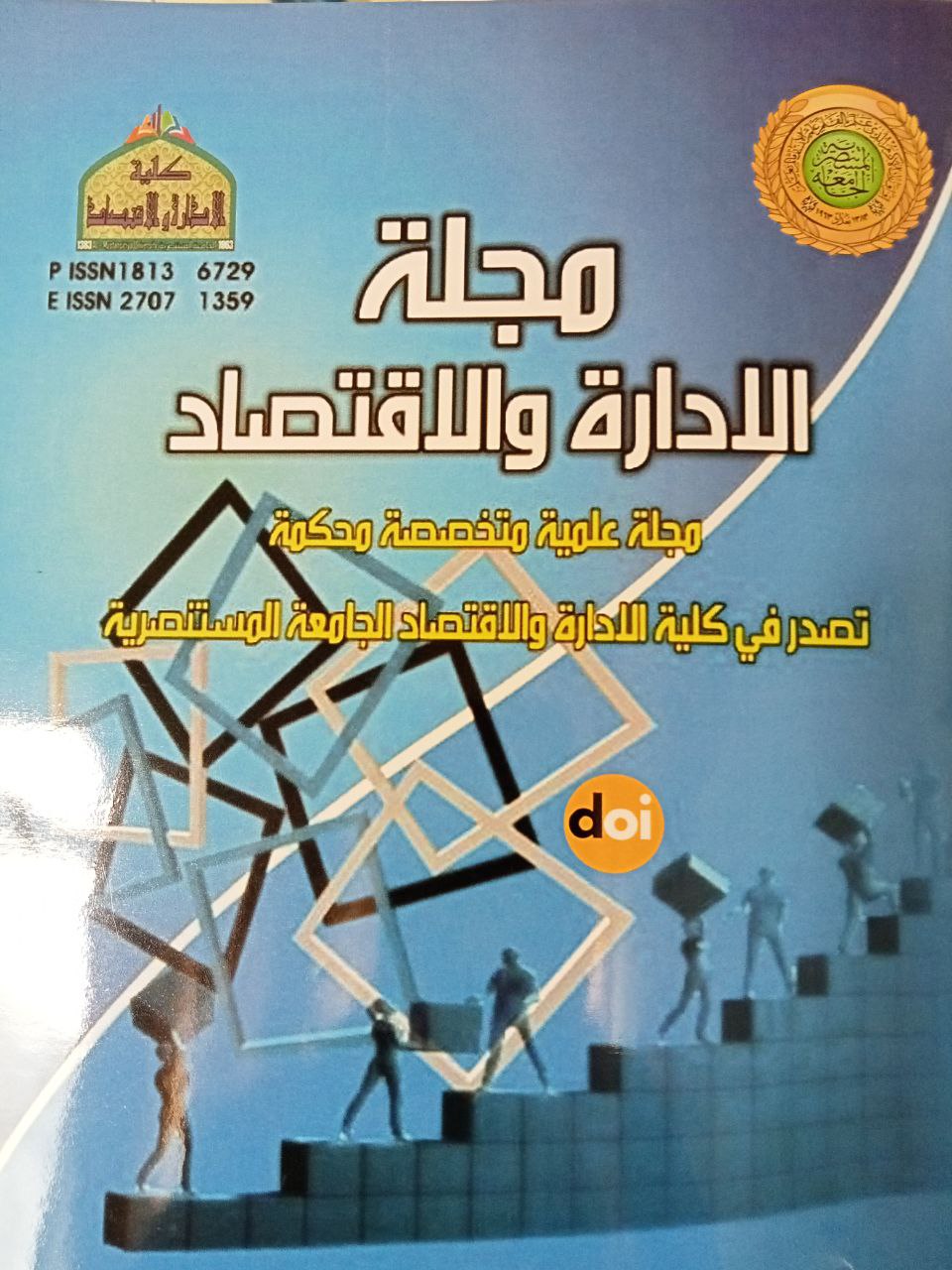Autoregressive modeling of self-threshold with practical application
DOI:
https://doi.org/10.31272/jae.i130.31Abstract
Although linear time series models have wide applications for economic phenomena in general, they are not able to capture the behavior of many economic phenomena and applications, especially financial ones. As this type of series is characterized by modeling the kinetic state of the phenomena of asymmetry, structural changes, threshold, and others. Therefore, this shortcoming in linear modeling led to the emergence of non-linear models, which are models of various formats and not a model in one general format, as is the case in linear modeling.
In order to overcome this shortcoming, most recent studies have adopted non-linear modeling, and (Tong, 1978) was one of the first who made a qualitative leap in the application of this type of models that depend on the analysis of the dynamics of financial and monetary time series and others, including autoregressive models of the self-threshold. (SETAR).
This research aims to apply the (SETAR) model to a sample that represents the series of the percentage change in the shares of the Iraq Stock Exchange for the index (ISX60) for a group of companies, and then make an applied comparison of the methods of the mentioned model.
Through the results of the applied side, it was found that the appropriate model for the research sample is the model SETAR (2;2,0) with the threshold (\gamma = 0.25). The model has outperformed SETAR (2;2,0) for having the lowest values of the criteria (AIC, BIC, pooled-AIC, MAPE), and this model also outperformed the linear model AR (1).Research extracted from a master's thesis
References
1. Clements, P. and Smith, M. J. (1997), “A Monte Carlo study of tempirical SETAR models”, University of Warwick, Publications Service & WRAhe forecasting performance of P, Warwick economic research papers.
2. Crespo-Cuaresma,J.(2000).” Forecasting European GDP Using Self Exciting Threshold Autoregressive Models”. Economics Series No. 79, Institute for Advanced Studies, Vienna.
3. De Bruin, P.T. and. De Gooijer, J.G.(1998).” A comparison of ARMA and SETAR Forecasts“,Department of Economic Statistics, University of Amsterdam, Roetersstraat 11, 1018 WB Amsterdam, The Netherlands.
4. Fırat , E.H.(2017).” SETAR (Self-exciting Threshold Autoregressive) Non-linear Currency Modelling in EUR/USD, EUR/TRY and USD/TRY aParities “,Mathematics and Statistics 5(1): 33-55. DOI: https://doi.org/10.13189/ms.2017.050105
5. Galeanoa,P. and Peñab,D.(2007).” Improved model selection criteria for SETAR time series models .“, Journal of Statistical Planning and Inference , 137 pp.2802 – 2814 DOI: https://doi.org/10.1016/j.jspi.2006.10.014
6. Hansen, B. E. (1997). Inference in TAR models. Studies in Nonlinear Dynamics and Econometrics 2, 1-14. DOI: https://doi.org/10.2202/1558-3708.1024
7. Hansen, B. E.(1999) .” Threshold effects in non-dynamic panels: Estimation, testing, and inference “,Journal of Econometrics 93, 345}368. DOI: https://doi.org/10.1016/S0304-4076(99)00025-1
8. Khan, M. H. (2015). “Advances in Applied Nonlinear Time Series Modeling”, Pakistan
9. Perron, P. (2018). “Unit Root and Structural Breaks”. Econometrics, 1(8): 1-169. DOI: https://doi.org/10.1142/10930-vol1
10. Rothman, P. (1998). “Forecasting asymmetric unemployment rates”. Review of Economic and Statistics, 80, 164-168. DOI: https://doi.org/10.1162/003465398557276
11. Tong, H. (1990). Non-linear time series. A dynamical system approach. Oxford University Press, Oxford. DOI: https://doi.org/10.1093/oso/9780198522249.001.0001
12. Tong, H. & Lim, K.S. (1980), “Threshold Auto-regression, Limit Cycles and Cyclial Data”. Journal of the Royal Statistical Society, B42, 245-292. DOI: https://doi.org/10.1111/j.2517-6161.1980.tb01126.x
13. Tong, H. & Yeung, I. (1991). “On tests for Self-exciting Threshold Autoregressive-Type Non-linearity in Partially Observed Time Series”. Applied Statistics, 40: 43-62. DOI: https://doi.org/10.2307/2347904
14. Tsay, R. S. (1989) Testing and modeling threshold autoregressive processes. J. Am. Statist. Ass., 84, 231-240. DOI: https://doi.org/10.1080/01621459.1989.10478760
15. Tsay, R. S. (1986).” Non-linearity tests for time series”. Biometrika, 73, 461-466. DOI: https://doi.org/10.1093/biomet/73.2.461

Downloads
Published
Issue
Section
License
Copyright (c) 2023 Journal of Administration and Economics

This work is licensed under a Creative Commons Attribution 4.0 International License.
The journal of Administration & Economics is an open- access journal that all contents are free of charge. Articles of this journal are licensed under the terms of the Creative Commons Attribution International Public License CC-BY 4.0 (https://creativecommons.org/licenses/by/4.0/legalcode) that licensees are unrestrictly allowedto search, download, share, distribute, print, or link to the full text of the articles, crawl them for indexing and reproduce any medium of the articles provided that they give the author(s) proper credits (citation). The journal allows the author(s) to retain the copyright of their published article.
Creative Commons-Attribution (BY)









